| Revista Umělec 2006/1 >> A Dinner with Olaf | Lista de todas las ediciones | ||||||||||||
|
|||||||||||||
A Dinner with OlafRevista Umělec 2006/101.01.2006 Oliver Kielmayer | Entrevista | en cs |
|||||||||||||
|
Oliver Kielmayer speaks with Olaf Breuning
Why didn’t you attend the opening of the Biennale in Prague? I had a production in New York that occupied all my time. For three months I was involved in a new exhibition in the gallery Chisenhale. It was my first important exhibition in London on such a large scale. What did you show in Chisenhale? Most people expected multi-media work with sound and video, but I felt like doing something handmade. First I did 1500 handmade candles. It takes about a half an hour to make one candle so I had ten assistants aid in that. The candles are in seven different colors. You dip the candle into the color bath and when it is done it comes out looking like colorful tree rings. The installation is huge and is meant to resemble a garden or park. We placed the candles into wooden trunks that looked like primitive animal figures—a cheetah with yellow and black candles, or a spider, a bird, a crocodile. All of this is made from massive wood, a mix of Urse Fischer and George Baselitz—since every object is handmade, each object is different. Actually, the nature of the work is simple, a three-year old could construct it but the candles give it an aggressive edge. The candle wicks are cut off, looking like colored quills protruding from the wood. I was pleased with the final product. You mentioned that you regularly go to your studio. With ten assistants, that sounds like a gargantuan workshop, ŕ la Warhol! No, it isn’t so glamorous! It’s actually a small room. I go in there three times a week. When I’m not in the studio, I’m busy settling many things, emails, administrative details and so forth. Other than that, I need days to think about what I will be doing. I work on Saturdays as well but Sunday belongs to my girlfriend. We sleep until twelve and then go to Central Park. Very unglamorous. On which day does your glamorous life take place then? It has calmed down considerably. We go dining out a lot but more often to places which I know. Once a week I go somewhere with Brian, or with people who I arrange to meet with. The last moment of glamour was a month ago, it was the gala dinner for Cindy Sherman. Behind me sat Elton John who farted endlessly. John Waters was also there and I sat at one table with Tony Oursler. It was a benefit auction. Your work has become concentrated in the last years. I think it is has become simpler but at the same time more substantial. The first phase of my work is definitely done. At the end of the nineties, my work was noticed because of my flirtations with the New Gothic and references to horror movies. But this phase has passed and I had to get rid of “horror Breuning”. I perceived the “horror Breunings” as a very short time period, you did different things before that but perhaps the public saw it differently. My earlier works were in the tradition of multimedia installations. They were attempts to completely occupy the space. I think that in recent years big changes have occurred. Sure, but I still see your work as more a continuum with an underlying consistent theme. The photos They Live and Home were a kind of resume of the nineties. Both play with various possibilities: how our generation looks for fulfillment and a sense of life. That’s what I took to be the underlying Breuning theme. There is a text about your work entitled “In Search of Lost Sense”—in my opinion, this is very apt indeed! Not necessarily. Already in They Live the frame of reference was very postmodern. It was a Babylon Blabber in one picture, but Home shows a very individual view of the world. I tried to narrate something in a religious way. The structure of the narration is surely different, but the “narrated” doesn’t have to be. In Home, there is only one protagonist with various life plans but in They Live it is different people who embody such individual life plans. Visually, these products are something else. But of course after life has run its course there are only a few defined themes which one ends up interested in. These themes get reiterated and recycled. Are you going to make a new film after Chisenhale? Yes, it will be a big project. I am going to work on it for the whole of next year. The main theme is various ways to confront the fear of death. It touches on how we try to give the finite aspect of our lives some sense again through love, sex, religion. Suddenly we realize that we will live only to be 70 or 80. When does one actually realize that? I think that I have yet to realize it. Maybe not exactly, in the sense of personal growth and maturity. For instance, I don’t go to wild parties anymore, that stage has passed. Or education, my school years and studies will not come back again. It is a big subject with lots of different opinions. That’s a challenge for me. It will be rather ironic. Woody Allen speaks a lot in this sense about this theme. How did the concept of this new film arise and why did you decide to use the motif of death? Most of what I did for the exhibition in Chisenhale was done with manual work. Film, in this respect, is better. One can add together a lot of properties and record them as if it were in a diary. Still, I was an artist who likes to tell stories visually. In film you can condense everything which you were engaged in. That is what I appreciated in Home. At the same time, I was thinking about many things recently and I found out that life is not that important to me. In principle, I am a friendly and open person but my attitude towards life is somewhat contemptuous. I don’t take it seriously. At the same time, you live your life as best as you can—both materially and conceptually. Isn’t that a bit pretentious, to enjoy, live even, through contempt? I am no intellectual. I’m just analytical. We only have one life, which we take seriously, but at the same time there is an unbelievable unimportance of being. Often I find that reality is petty. It doesn’t concern me whether or not I die tomorrow or in 30 years. Life will be worse with age, it won’t get better. Basically I am a person who says yes to life but at the same time I feel the fleeting nature of it too. My life has improved in the last ten years. Not that improvement is constant but maybe my life will continue to improve until I’m 40? I’m 35 and I notice how I am increasingly forced to conform to a certain life condition. I think that the only possibility we have in life is to build a very free relationship with it and that includes not taking it too seriously. Still one gets seized by fear of death sometimes. Six months ago, I met a very lively 45 year-old Chinese woman in great shape. Three days ago I ran into her again and she was trembling and hardly able to speak. She had breast cancer deep in her bones and had undergone chemotherapy and radiation. People often have many plans about what they want to do in their lives and what they want to achieve. Some of them find out along the way that they are hugely limited and they come to question how they are to live within these limitations. Recently I confronted my own naive view of life. I had a few bottles in my wine cellar which have to sit there for at least 20 years before you can drink them. I thought how the wine, mulled to full flavor from 20 years, would be rendered useless if I should die. I realized that I should work to lead a full life in the next 20 years. Well, this is not my case. Maybe that is why I don’t have a wine cellar, that thought doesn’t suit me. I don’t feel the need to live until I am 70. I am fixed to this moment, I enjoy it and I’m open to all possibilities. I’m the poster child of post-modernism. I am open to all different models of reality. All the ideas we have about life which we try to build our own fate upon are interchangeable models, which themselves have no validity. This gives me the freedom of craziness, the possibility to do anything. That’s a great feeling. When you think about death, you must ask yourself if you ever want to reproduce? That is not a question for me. I don’t think I have to pursue something that will then spread. I was never a person interested in my legacy, not even in my art. I don’t care about that. And your art work? Why do you make it then? One has to do something, to live life in a good and amusing fashion. There are many things one can want. For example, to be a good person I would work for the Red Cross, not be an artist. I decided to be an artist and lavish in being the luxurious animal of society. I’m not interested in how to preserve my art for the future like Donald Judd is for instance. Then you have disconnected yourself. You choose only from real models, you pick your own works. It is not only a play with possibilities, you also offer new compositions. Maybe that is why I make art: to capture life in moments. Every work is like a slice of your life. You digest it, experience it and print it in the form of an art piece. This distinguishes me. Just as you, a curator, are different from someone who works in a bank. We still try to think in greater connections, to speak about the world and create a complete picture of it. But art as a whole is totally irrelevant to the world. From the global point of view, art concerns only those who can afford it financially, those who can thoroughly engage in things that don’t have anything in common with everyday life. In Ghana or South America people have little interest in luxury items, but from a pragmatic stance, I don’t think that is bad at all. Still, art often influences people who rule the world. Amongst this social select, art acts as a determining medium that allows for communication—an exchange using art. Culture often serves as evidence that people have time and money to occupy themselves with the great but useless questions of life. Art is like an expensive watch; it is partly an aristocratic mental attitude, allowing for the possibility to distinguish yourself from the working class. Art connoisseurs give off airs of good breeding and money. Of all the rich people who collect art, only five percent have any real sense of art. It’s only fashion and style. It’s difficult to concentrate on these hard questions while trying to choose a dessert! Let’s concentrate on dessert then. Cheers to a better life!
01.01.2006
Artículos recomendados
|
|||||||||||||
|
04.02.2020 10:17
Letošní 50. ročník Art Basel přilákal celkem 93 000 návštěvníků a sběratelů z 80 zemí světa. 290 prémiových galerií představilo umělecká díla od počátku 20. století až po současnost. Hlavní sektor přehlídky, tradičně v prvním patře výstavního prostoru, představil 232 předních galerií z celého světa nabízející umění nejvyšší kvality. Veletrh ukázal vzestupný trend prodeje prostřednictvím galerií jak soukromým sbírkám, tak i institucím. Kromě hlavního veletrhu stály za návštěvu i ty přidružené: Volta, Liste a Photo Basel, k tomu doprovodné programy a výstavy v místních institucích, které kvalitou daleko přesahují hranice města tj. Kunsthalle Basel, Kunstmuseum, Tinguely muzeum nebo Fondation Beyeler.
|







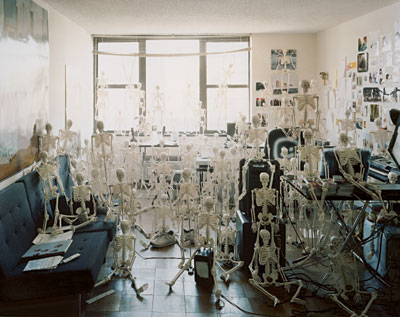


















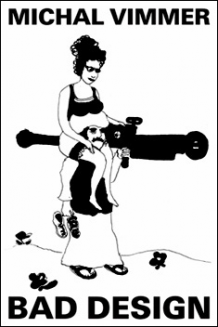




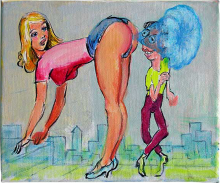
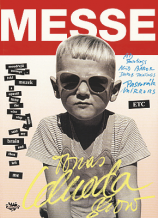
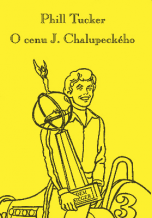
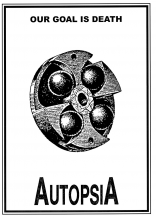


 New book by I.M.Jirous in English at our online bookshop.
New book by I.M.Jirous in English at our online bookshop.
Comentarios
Actualmente no hay comentariosAgregar nuevo comentario